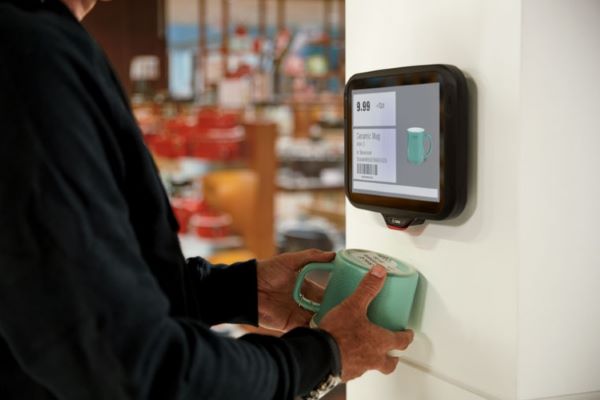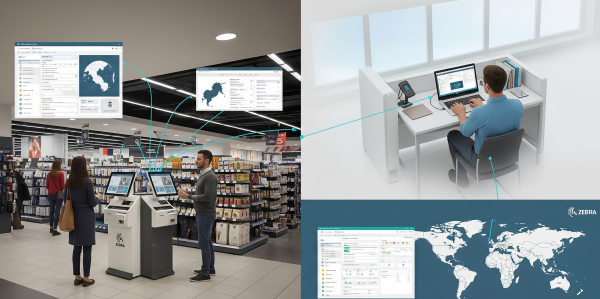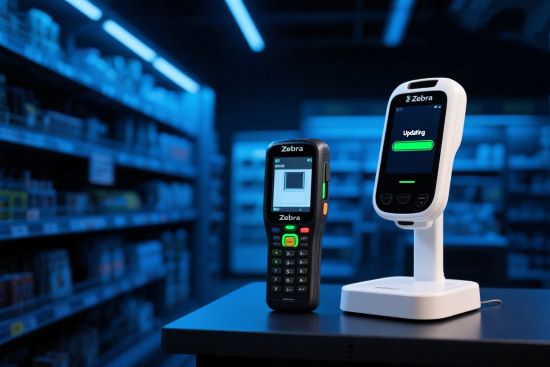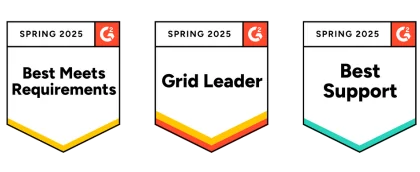- 1. What is Zebra Kiosk?
- 2. How Zebra Kiosk Speeds 15-Min Checkout to 30s?
- Hardware: "Instant Recognition" for Minimal Operation Time
- Software: "Seamless Integration" Across the Entire Retail Workflow
- Scenario-Based Customization
- 3. Three Retail Scenarios: A "Revolution in Efficiency"
- 4. How to Ensure Uninterrupted Checkouts with Zebra Kiosks

- 5. Keytaways: How to Choose Zebra Kiosks?
Think about the last time you shopped online. How fast did it take for a product to be added to your cart and you to check out? Ideally, in less than 5 minutes, you could choose the color of your product, enter your shipping details, and pay for it.
That’s what convenience looks like for modern shoppers. Speed is no longer a bonus, but a bare minimum. With that in mind, brick-and-mortar stores are finding ways to quicken the checkout process. Even today, checkout counters are still a primary bottleneck.
During rush hours or sale seasons, customers can wait up to 15 minutes in line to pay. That’s an abandoned purchase waiting to happen.
Industry data shows that nearly one in three consumers will walk away from a purchase if they have to wait more than 10 minutes, while retailers spend thousands monthly on extra labor just to manage checkout queues. The hidden cost of inefficiency is stacking up and eating into profit margins.
As demand for instant service grows, retailers are asking a vital question: Can the 15-minute checkout be compressed into just 30 seconds? Zebra Kiosk says yes, and it's redefining fast retail.
1What is Zebra Kiosk?
Zebra Kiosk is a manufacturing kiosk solution that is purpose-built to streamline service and retail automation. Designed for high-traffic environments, Zebra’s self-service kiosks are widely adopted in sectors like grocery, convenience, fashion, and quick-service restaurants.
The most popular models include the Zebra CC600 and CC6000, both built on Android and designed for space-efficient deployment. These units combine enterprise-grade performance with intuitive consumer-grade interfaces.
At the core of Zebra’s manufacturing kiosk lineup is robust integration. Every device pairs with Zebra’s ecosystem of scanners, printers, and software tools, allowing retailers to quickly implement and scale kiosks across multiple locations.
The primary use case in retail is self-checkout, but the kiosks are also used for price checks, loyalty program sign-ups, inventory lookup, and order pickup validation.
By putting more control into customers' hands, Zebra Kiosk reduces friction at the point of sale and creates a more responsive, efficient retail environment.

2How Zebra Kiosk Speeds 15-Min Checkout to 30s?
Zebra device systems are engineered to eliminate the delays typically seen at traditional checkout counters.
These kiosks combine high-speed scanner printer technology with retail-optimized software, enabling quick transactions with minimal staff involvement.
The result is a dramatic reduction in queue times and labor overhead.
Hardware: "Instant Recognition" for Minimal Operation Time
Zebra kiosks integrate enterprise-grade 1D/2D barcode scanners capable of capturing tags in under one second, even when labels are damaged, wrinkled, or obscured by poor lighting.
Customers can then scan items instantly without retries or alignment issues. Thermal receipt printers deliver fast print speeds and high uptime, eliminating mechanical failures common in consumer-grade machines.
Kiosks like the CC6000 feature edge-to-edge touchscreens, ruggedized for retail use and highly responsive to both finger and stylus input.
Software: "Seamless Integration" Across the Entire Retail Workflow
Zebra’s software layer connects directly with inventory management, payment gateways, and loyalty databases. This end-to-end connectivity allows for real-time pricing, promotions, and stock updates during checkout.
Retailers can push dynamic content and product updates without downtime, enabling accurate, current transaction data on every kiosk. Support for multiple payment types, including mobile wallets and chip cards, ensures compatibility with modern buyer preferences.
Scenario-Based Customization
Zebra Kiosk supports modular deployment across store types.
In a supermarket, it can handle complex transactions including bulk items and loyalty discounts.
In apparel stores, it integrates RFID readers for instant item validation.
For convenience stores, it supports high-speed scanning and contactless payment to keep customer turnover high.
The system is flexible enough to meet the pace and complexity of different retail operations.
3Three Retail Scenarios: A "Revolution in Efficiency"
Zebra Kiosks are transforming retail operations with measurable gains in speed, accuracy, and labor efficiency.
Below are three real-world deployments showing how retailers reduce traditional checkout times to under a minute and improve overall performance.
Supermarket: Coop Danmark
Coop Danmark, one of the largest grocery chains in Denmark, deployed Zebra CC6000 self-service kiosks integrated with Softpay’s payment system. The kiosks handled up to 60% of all transactions. Checkout lines were significantly reduced, allowing staff to turn their attention to other areas of the store. Customers completed purchases more independently and efficiently, resulting in improved satisfaction and operational flow.
Source: Softpay Case Study - Coop Danmark
Convenience Stores: Modeled from Urban Chain Deployment
While Zebra hasn’t publicly named a single convenience store chain, urban-format retailers using Zebra’s CC6000 devices (like those in Softpay deployments) have successfully replicated the same high-speed model:
- Kiosks processed a majority of customer checkouts, even during late-night hours
- Staffing per shift was reduced without compromising service quality
- Scan-to-pay times dropped to under 30 seconds per transaction.
This setup is particularly effective in high-turnover stores where every second saved equals more foot traffic handled.
Fashion and Book Retail: Gramedia, Indonesia
Gramedia, a leading lifestyle and bookstore chain in Indonesia, implemented Zebra kiosks with RFID scanning for a faster and more accurate checkout experience. The RFID system improved inventory count speeds by 50% and increased stock accuracy by the same margin. This allowed customers to validate prices and process purchases more quickly while reducing errors caused by manual scanning.
Source: Zebra Technologies – Gramedia RFID Case Study
4How to Ensure Uninterrupted Checkouts with Zebra Kiosks
Even the most advanced hardware needs the right support to operate at peak efficiency. Unplanned outages or software issues can immediately disrupt customer flow and revenue.
For the smoothest operation, combining Zebra kiosks with AirDroid Business MDM solution creates a reliable infrastructure for remote management, maintenance, and performance monitoring.
Remote Monitoring & Rapid Troubleshooting
With AirDroid Business, IT teams can remotely monitor each Zebra kiosk’s status in real time. Alerts are sent instantly if a unit encounters performance issues or disconnects from the network. Support teams can then initiate remote sessions to diagnose and resolve problems without needing on-site technicians. This reduces downtime and promotes continuity, especially during high-traffic periods.

Software Silent Updates
AirDroid Business enables silent app and system updates across fleets of Zebra kiosks. Retailers can schedule these updates during off-hours to install new features, patches, or compliance changes without disrupting operations. Centralized control also reduces manual labor and eliminates inconsistencies across different store locations.

5Key Takeaways: How to Choose Zebra Kiosks?
Choosing the right Zebra Kiosk starts with understanding your store's size and customer traffic.
Zebra CC600 has compact design and basic self-service functions, and is suitable for small shops with limited space and moderate passenger flow . This is ideal for finding product quickly or for simple loyalty program interactions.
Zebra CC6000 supports larger screens, and can integrate advanced peripheral devices such as RFID readers and high-performance scanners, which is helpful for detailed product exploration or video assistance, and is suitable for a busier environment a complicated workflow and a stronger customer participation demand.
When looking for modular and highly customizable solution, please consider the Zebra KC 50 Kiosk computer. This Android-based computing unit serves as the core of a flexible kiosk system, supporting various screen sizes (like 15-inch or 22-inch) and allowing the integration of a wide array of peripherals such as barcode scanners, printers, and payment terminals. From product catalogues to endless channel solutions, it is very suitable for creating customized self-service stations.
As a supplement to KC 50, the Zebra TD 50 touch screen provides interactive screen component. It is specially designed for scenes that require customer or employee 'input, and can be used in conjunction with the KC 50 to create a multi-functional dual-screen kiosk setting to improve transaction efficiency.
Zebra's official interactive kiosk product page provides a detailed classification of each model, including comparative charts, technical specifications and deployment resources.
Using these resources to plan the deployment will help retailers to expand their scale faster, while ensuring performance, compatibility and customer satisfaction.









Leave a Reply.